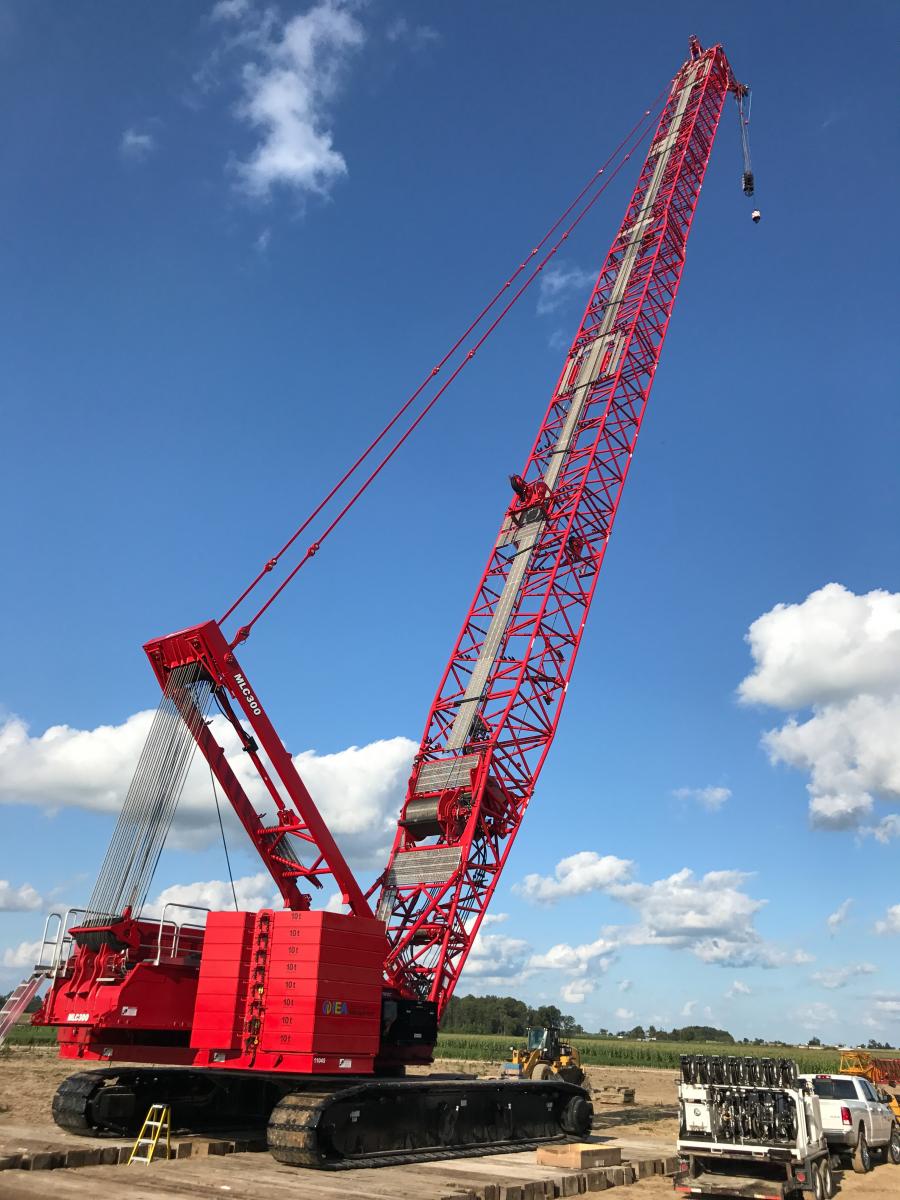
Wed December 27, 2017
Crane Equipment Guide
One North American construction company that works in the renewable energy sector discovered the time-saving and logistical benefits of using a Manitowoc MLC300 with fixed-position counterweight (FPC) to construct wind towers. White Construction is the first customer to use the crane, which features the same load charts and compact footprint as the original MLC300, but utilizes a fixed-position counterweight instead of a variable position counterweight (VPC).
The Clinton, Ind.-based construction firm used the 330-ton crane to build 30 wind towers for the Hog Creek Wind Project in Ada, Ohio, which will soon provide 66 mW of electricity to the surrounding area. Not only did the new crawler crane complete the project's lifts with precision on hilly, uneven terrain, it helped the contracting team to finish three weeks ahead of schedule.
"We chose the MLC300 FPC because of its extra capacity compared with competing lattice boom crawler cranes," said Jason Ruggles, director of crane operations of White Construction. "Combined with its smaller footprint, the crane enabled us to easily maneuver around the hilly terrain of the wind farm and complete each lift."
White Construction's MLC300 FPC was set up with an optional 11.5 ft.-wide boom kit. Operators used the crane to install the bases and midsections of each tower before bringing a larger crawler crane in to install turbine assemblies. The bases weighed roughly 47 tons and were lifted to a height of 52 ft., while the midsections weighed some 52 tons and were lifted to a height of 75 ft. Construction of the Hog Creek Wind Project began in August of 2017 and finished three weeks ahead of schedule in early November, due to the MLC300 FPC's time-saving maneuverability and industry-leading capacity from a compact footprint.
"There's no room for error in the wind industry," Ruggles said. "If you have downtime with your equipment, the work doesn't stop. It just piles up behind you. At Hog's Creek, we had to build 30 wind towers in a very short span of time, so using a brand-new machine was a bit daunting. But I'm happy to say that we couldn't have picked a better crane for this job."
The MLC300 FPC was introduced to give customers the benefits of the 330 ton-size platform and compact footprint of the original MLC300, but without the additional investment in features and moving parts that come with VPC. For the fixed-position counterweight configuration, the VPC trolley and tray have been replaced by a two-position, stationary counterweight tray.
"The idea of the MLC300 FPC is to offer customers a more traditional lattice boom crawler crane for applications that don't require the VPC," said Harley Smith, global product director of crawler cranes of Manitowoc. "If desired, the customer has the option to install the VPC in the future for added versatility and higher performance."
White Construction purchased the MLC300 FPC from Walter Payton Power Equipment, a Riverdale, Ill.-based provider of Manitowoc, National Crane and Grove machines.
"White Construction has had a long, great relationship with Manitowoc Cranes," Ruggles said. "A big part of sustaining that relationship is the excellent service we've gotten from Walter Payton over the years."
Since its founding more than 60 years ago, White Construction has transformed from a small trucking and excavating company into a recognized leader in the construction industry, committed to building infrastructure and energy projects across North America. The Clinton, Ind.-based company joined forces with Infrastructure and Energy Alternatives (IEA) in 2011, establishing itself as a leader in the renewable energy space.
"When the new MLC300 came out at ConExpo, our eyes lit up," Ruggles said. "My crew and I knew that Manitowoc had delivered a crane that would perform especially well for the wind industry."
 Cranes Equipment
Cranes Equipment Articles
Articles Email Updates
Email Updates Sell Your Machines
Sell Your Machines

 Cranes Equipment
Cranes Equipment Cranes Dealers
Cranes Dealers Cranes Articles
Cranes Articles Email Updates
Email Updates Sell Your Machines
Sell Your Machines